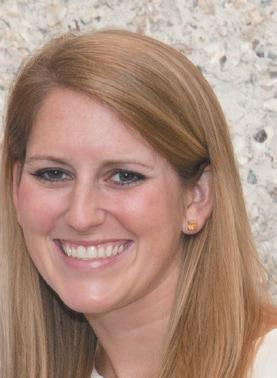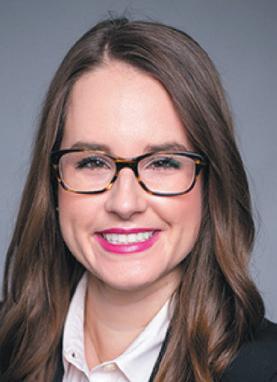
5 minute read
The Health Risks of Loneliness, continued
reduce blood pressure and cortisol levels and ease anxiety. It can also moderate pain and help people better tolerate it.
“Inflammation, immune response, and sleep problems, which are linked to other health risk factors, all seem to be better in people with good relationships. Across the lifespan, physical health and mental health are inextricably linked to each other and to the quality of our relationships.”
There has been a lot of concern about the impact of loneliness on older people. Some surprising research shows that the two highest peaks in loneliness are in young people in their teens and early 20s, and in adults in their 40s. It is lowest in people in their early 60s.
Why is GenZ, one of the most active groups on social media, also the most likely to suffer from social isolation? “Screen time doesn’t replace the real life interaction that we need,” said UAB assistant professor Margaret Canter, PhD. “Texts can’t provide the same level of connectedness. The more time people spend with digital media, the less time they have to interact in real life situations.
“Since quarantining during the pandemic, young people seem more inclined to see home as their safe place, especially with the wave of mass shootings and violence. And with the spike in inflation, it’s harder to pay for after-school activities and sports programs, which was where many children learned how to make friends.
“Young people are under a lot of pressure as they move away from home, and go out into the world to establish their own identity. At a time in life when building new relationships is so important, it’s getting harder.”
Lonely teens and young adults may be more inclined to turn to drugs to dull the ache of depression, or to negative behaviors like cutting or eating disorders. Anger unbuffered by the support of good relationships may be turned inward into thoughts of suicide, or outward in thoughts of violence.
The next spike in loneliness comes in the 40s, a time of transition.
“Many of the factors involved in social isolation tend to cluster around milestones in life,” Hays said. “In their 40s, people’s children leave the nest. They may be dealing with divorce, the aging or loss of their parents and possibly the early loss of a spouse, sibling or friend. They may have lost touch with the friends and support structures of their youth and are coming to terms with how the passage of time is shrinking the unlimited possibilities of their early years.”
In these years, alcoholism or substance abuse may become a pattern of selfmedication. Suicide rates tend to climb as stress and disappointment increase in isolation. Negative health behaviors may lay the groundwork for future chronic illnesses through poor eating habits, lack of activity and no one to help them buffer stress.
“The impact of isolation varies from one person to another depending on whether they tend to be introverts or extroverts,” Hays said “An introvert may interpret time alone as an enjoyable interlude of quiet. However, for an extrovert, being alone is a recipe for disaster.
“Being married or in a relationship tends to be protective, but it is no guarantee. Relationships can also be unhappy. It may be necessary to grow beyond a bad relationship to establish a good one.”
Retirement is another milestone when people need to be aware of maintaining and building new friendships. The early 60s statistically tend to be when family, social and work relationships are at their best. However, how the years that follow go can depend on whether people think of retirement as something they retire from or retire to.
Despite intentions to stay in touch, contact with long-time work friends tends to lessen. These relationships need to be replaced with new friends met through shared interests.
“People should prepare as much for the emotional and social side of retirement as they do the financial side,” Hays said. “Everyone needs either meaningful work or a purpose that gives them a reason to get up in the morning. Think about new things you’d like to try. Join a group that shares that interest. That’s how you meet interesting people you will enjoy being around.”
In the later senior years, relationships shift as health, mobility and access to transportation change. Loss of a spouse and friends can make life more lonely, and loss of health and autonomy can make keeping a positive outlook more difficult. However the positive effects on the risks of illnesses and dementia make social contact worth the effort.
What can health professionals do to reduce the effects of loneliness on their patients? The Surgeon General’s plan includes screening questions in regular health assessments and advises providers to be aware of milestones that may increase the risk of isolation.
Canter said, “Part of my job is teaching our pediatric residents how to recognize loneliness, depression, anxiety and other emotional challenges in children. It’s a skill we need to pass on when dealing with patients throughout their lives.”

Shortage of Providers and Beds,
continued from page 1 typically scheduling out a month or two, sometimes more. Most of our patients are on medication when they leave here, so they need someone to follow up with that. Finding psychiatrists and counselors who are accepting new patients is difficult, and this is especially important for patients coming out of the hospital because there’s more acuity there.

“We have to get very creative, but most of the time we are able to find something. They may have to go to their family doctor until they can get in with a psychiatrist. If a therapist doesn’t have an opening, we get them on a waiting list. But there’s only so much we can do. Once they leave the hospital, they may decide for a variety of reasons not to follow up, and they end up back here.”
Medicaid patients have even fewer resources to draw on. “They don’t get appropriate outpatient care, which makes the recidivism rate high,” Gillott said.

“There are almost no psychiatrists in private practice that accept Medicaid, so those patients have to go to a community mental health center,” Edmonds said. “It’s been difficult to get appointments with some of those centers. With staffing issues, it’s hard to get them to even answer the phone.
“Most children have insurance, even if it’s Medicaid. But a lot of adults come through here without any insurance, and that’s even tougher. They need to see somebody, and that is very expensive. Most of the uninsured patients don’t have an income.”
COVID has also been a factor. “Mental health has really gone by the wayside during COVID. We call the mental health crisis the fourth wave of the pandemic,” Gillott said. “So many people went without medicine and treatment for so long.”
“There’s such a great need right now, post-pandemic,” Edmonds said. “I see children in my private practice, and most of the issues I’ve seen have been triggered by the anxiety of the pandemic. Testing is an additional problems for children as a result of the provider shortage. Psychologists who do testing for ADHD, learning disabilities, or other kinds of mental disorders, have a six to 12 month wait.”
There are no easy solutions. “Alabama is so far behind, to catch us up to where we need to be is going to take a lot of work and plenty of advocates,” Gillott said. “We aren’t seeing much of that. There’s such a stigma to advocating for mental health. We need someone who understands it and speaks to it in such a way to get this issue the attention it needs. We just aren’t there yet.”
















